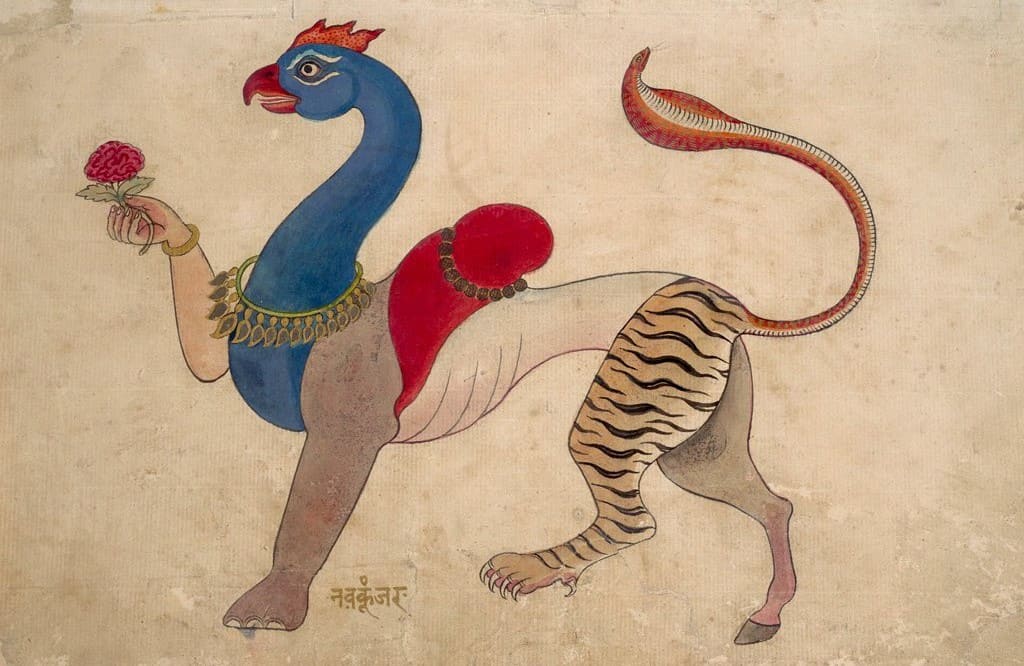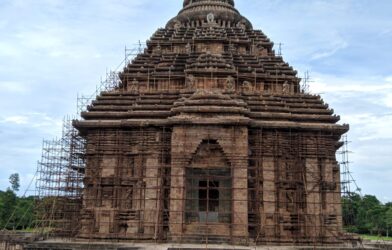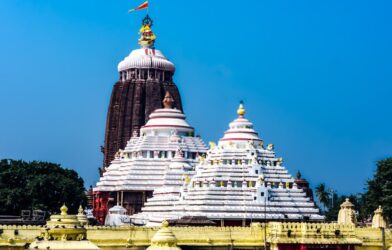Email :143
Navagunjara Stories - You Never Heard!
Navagunjara is a mythical creature from Hindu mythology, particularly in the history of the Mahabharata, one of the two major Sanskrit epics of ancient India. The Navagunjara creature is a complex avatar of Lord Vishnu for its composite form, which includes parts of various animals, symbolizing a harmonious blend of different aspects of life and nature.
About Navagunjara:
Navagunjara is an avatar of lord Vishnu or Krishna and is the most complex form of any creature explained in the history of Sanatan dharma. It’s a hybrid of 9 different creatures including human beings.
Symbolic Interpretations of Navagunjara:
Navagunjara Creature is described as having:
- Head
- Neck
- Back
- Tail
- Three Legs
- Fourth Leg
As per the Odia version of Mahabharata written by the famous Odia poet “Sarala Das”, lord Vishnu manifested himself as a divine animal Nabagunjara which have the head of a rooster and neck of a peacock, hump of a bull, tail of a snake, waist of a lion. Three of its legs are from a tiger, horse, and elephant while the fourth one is a human hand holding lotus flower.
History of Navagunjara:
Few people know about the history of the Navagunjara creature, steeped in spiritual significance. This mythical creature’s origins and stories are deeply embedded in ancient Indian literature and cultural traditions. The story can be found in the Odia Mahabharata written by Sarala Das in the 15th century. This story is also associated with the Puri Jagannath temple and can be seen in its temple art.
Once when Pandavas were in Vanaprastha, Arjuna encountered with a strange animal and it is Navagunjara. Arjuna was mesmerized but equally frightened and unsettled by the sight of this complex being. He raised his bow, ready to shoot at it. At that moment, he heard an anonymous voice saying “What cannot exist in the human imagination can exist in the imagination of the universe. Lower your bow and submit to it. Arjuna listened, he saw the creature pick up a lotus with its hand and asked Arjuna, “Don’t you recognize me?” Arjuna suddenly realized that this form was Krishana. He dropped his weapon and realized it was the form of Lord Vishnu.
Navagunjara Painting:

Navagunjara’s unique form has inspired various artistic representations:
- Pattachitra Paintings: This traditional art form from Odisha features detailed depictions of Navagunjara, often portraying the creature in vibrant and intricate designs on cloth or dried palm leaves.
- Sculptures and Temple Art: Navagunjara is also depicted in sculptures and carvings in temples, showcasing its importance in religious and cultural contexts.
Conclusion:
It is really interesting to know about the history of “Sanatan dharma” where nine different species is considered to be divine but not a monster. In Greek mythology, the Hydra and the Chimera are both considered monstrous creatures, each featuring in distinct stories. The Hydra, a serpent-like creature with multiple heads, was slain by Hercules as one of his Twelve Labors. Meanwhile, the Chimera, a fire-breathing creature with the heads of a lion, a goat, and a serpent, was vanquished by the hero Bellerophon. Though they inhabit the same mythological world, these two creatures are part of separate tales.






